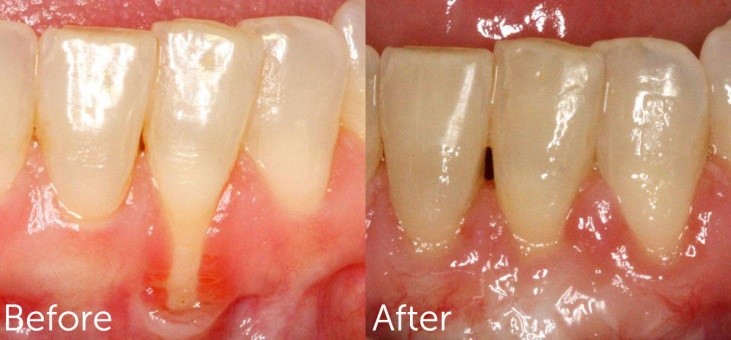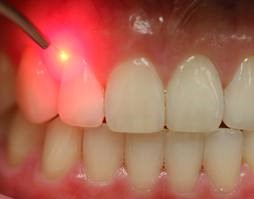Periodontal disease can spread from the gums to the bone that supports the teeth, and may even cause tooth loss in the most severe cases. There are very effective therapies to combat this, ranging from scaling that remove plaque and calculus from beneath the gum line to surgical repair of lost gum and bone tissue.
Periodontal therapy includes both surgical and non-surgical techniques to restore health to the tissues that support the teeth (gums and bone) and prevent tooth loss. They include:
- Scaling and Root Planing. These deep-cleaning techniques are the best starting point to control gum disease. Plaque and calculus (tartar) are removed from beneath the gum tissues, using hand scalers and/or ultrasonic instruments.
- Gingival Grafting: Sometimes it's necessary to replace areas of lost gum tissue so that tooth roots are adequately protected. This can be accomplished by taking healthy gum tissue from one area of the mouth and moving it to where it is needed, or by using laboratory-processed donor tissue.


- Periodontal Plastic Surgery. When used to describe surgery, the word “plastic” refers to any reshaping procedure that creates a more pleasing appearance of the gum tissues.
- Periodontal Laser Treatment. Removing diseased gum tissue with lasers can offer significant advantages over conventional surgery, such as less discomfort and gum shrinkage.
- Crown Lengthening Surgery. This is a surgical procedure in which tooth structure that is covered by gum and bone tissue may need to be exposed either for cosmetic reasons (too make the teeth look longer and the smile less gummy) or to aid in securing a new dental crown.
- Dental Implants: Today's preferred method of tooth replacement is a titanium dental implant, which is placed beneath the gum line and into the jawbone during a minor surgical procedure. The implant is then attached to a realistic-looking dental crown that is visible above the gum line and indistinguishable from a natural tooth.


